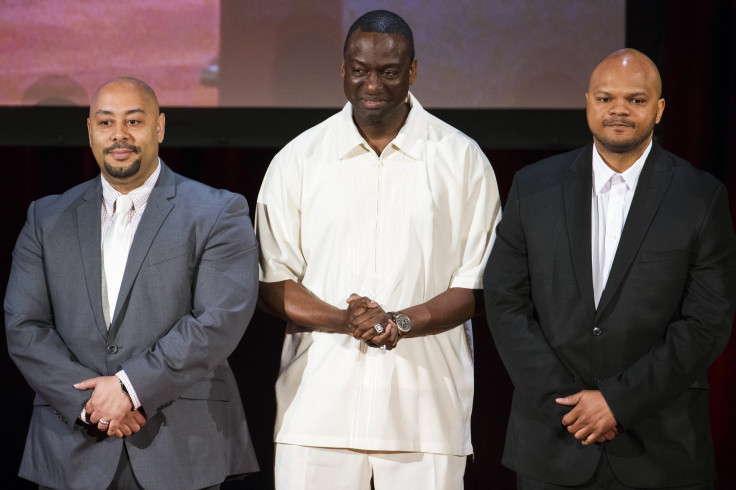Who Are The Central Park Five And What Do They Have To Do With Donald Trump?

Before the night of April 19, 1989, Kharey Wise, Kevin Richardson, Antron McCray, Yusef Salaam and Raymond Santana Jr. were just five friends from Harlem.
After, they were branded as the Central Park Five forever.
Police found a 28-year-old investment banker lying unconscious along her usual running route through Central Park that April night. She had been raped and brutally beaten, left with a fractured skull, hypothermia, brain damage and only 25 percent of the blood left in her body. When she finally recovered, she had no memory of the assault.

Enter the Central Park Five. Police and prosecutors immediately honed in on the five black and Hispanic boys, aged 14-16. They had been in the park that night and were in police custody for other incidents. Police videotaped confessions from the five boys, later found to have been coerced after hours of police interrogation. Despite knowledge of the coercion, the statements were ruled admissible.
At two separate trials, police and prosecutors cited the confessions and a smattering of evidence such as a few blood and hairs deemed “consistent” with the victim. The confessions were emphasized as the main evidence of their guilt. In 1990, the boys were sent to prison while continuing to maintain their innocence.
Love that my brothers @santanaraymond and @yusefsalaam and the Central Park Five are impacting this Trump campaign circus.
— Podcast Papi 🇭🇹 (@Combat_Jack) October 7, 2016
Twelve years later, Manhattan District Attorney Robert Morgenthau sent the original evidence in for DNA testing, which was in its early stages at the time of the trial, having been developed in 1985.
Morgenthau found evidence that the crime was committed by a man named Matias Reyes. Reyes had already been convicted for rape and murder and had recently come forward to say that he was, in fact, responsible for the events that night in Central Park. Thanks to Morgenthau's work, the case against the Central Park Five was overturned. Richardson, Salaam and Santana had served five years, while McCray and Wise served twelve.
In 2014, the five men settled with New York City for $40 million, roughly a million dollars for every year they spent behind bars. But presidential candidate Donald Trump has always maintained that the five were guilty despite what the DNA may say. He has recently started talking about it again on the campaign trail.
Apparently Mr. Trump is unfamiliar with the concept of wrongful conviction. https://t.co/8oyLx7qazi
— Ken Burns (@KenBurns) October 7, 2016
“They admitted they were guilty. The police doing the original investigation say they were guilty,” Trump told CNN this week. “The fact that the case was settled with so much evidence against them is outrageous. And the woman, so badly injured, will never be the same.”
Trump took out a full page ad in local newspapers a few days after the 1989 attack that called for the death penalty to be reinstated. “I want to hate these muggers and murderers,” the ad said. “They should be forced to suffer and, when they kill, they should be executed for their crimes.”
In 2015, Trump explained he didn’t think the five should have been executed because the jogger didn’t die. He went on to say that, on the subject of the settlement, the five “should be very thankful that I wasn’t mayor because they wouldn’t have gotten a dime,” according to the New York Daily News.
© Copyright IBTimes 2025. All rights reserved.






















